Nvidia GeForce RTX 3060 Review
The GeForce RTX 3060 is Nvidia’s latest $330 desktop GPU offering that you’re unlikely to find at its suggested retail price. With many things going on concurrently: the ongoing global pandemic, trade war, and cryptocurrency mining boom, that’s the situation we find ourselves in at the moment.
The first batch of reviews of the RTX 3060 went live about ten days ago, and while we had to delay ours, on the plus side this allowed us to take a more accurate look at pricing and post-launch availability. Of course, we have the usual array of benchmarks to go over and we’ll jump into that in a moment.
The RTX 3060 is based on the new GA106 die which measures 300mm2 and packs 3584 cores, 112 TMUs and 48 ROPs. That’s 26% fewer cores and TMUs than the 3060 Ti version, but 40% fewer ROPs due to the downgrade from a 256-bit wide memory bus to 192-bit. Helping to minimize that reduction is higher clocked 15 Gbps GDDR6 memory which provides a peak bandwidth of 360 GB/s, so just a 20% reduction from the 3060 Ti.
This change to the memory subsystem meant that Nvidia couldn’t pair the RTX 3060 with 8GB of VRAM. The options were essentially 6GB or 12GB. The former would have been embarrassing at this price point and with AMD set to release their mid-range parts with 12GB, Nvidia had little choice.
It also helps them to market the RTX 3060 and justify the $330 asking price which sees it come in just 18% cheaper than the 3060 Ti despite the significant reduction to the core configuration. On paper, the RTX 3060 doesn’t appear to be a great value product, assuming all models sold at the MSRP, but we’ll of course conduct a full performance evaluation and then work out where it lands in terms of cost per frame.
For testing we’re still using the Ryzen 9 3950X test system as we progress on updating everything to be tested under the R9 5950X. Expect all that data once we get through this latest round of product releases. The test system is configured with 32GB of dual-rank, dual-channel DDR4-3200 CL14 memory.
We’re going to look at the 1080p and 1440p data for half a dozen of the 14 games tested before we jump into our usual performance breakdown graphs.
Benchmarks
Starting with Watch Dogs Legion at 1080p, we see that the RTX 3060 is good for just 61 fps on average, making it slightly slower than the previous generation Radeon 5700 XT. A disappointing result to see in an Nvidia sponsored title. We’re basically looking at RTX 2070-like performance, so $500 GPU performance from 3 years ago.
The margins are fairly similar at 1440p, at least relative to other GeForce GPUs such as the RTX 2070. The RTX 3060 manages to match the 5700 XT here, so that’s certainly an improvement over what we saw at 1080p, but it’s still 21% slower than the 3060 Ti.
Assassin’s Creed Valhalla is an AMD sponsored title and here the 5700 XT is well ahead of the RTX 3060 delivering 22% more frames. Again, the 3060 is comparable to the RTX 2070 and 8% slower than the 2070 Super. Relative to the 3060 Ti it does well a 13% deficit here, though we are only at 1080p.
Relative to the 3060 Ti it does well a 13% deficit here, though we are only at 1080p.
The margin remains much the same at 1440p, where the 3060 was 14% slower than the 3060 Ti and 15% slower than the 5700 XT. It does match the vanilla RX 5700 and that means it’s just a few frames faster than the RTX 2070.
The RTX 3060 like most modern GPUs performs well in Death Stranding at 1080p, hitting 129 fps on average to match the GTX 1080 Ti and RX 5700. That said it’s 11% slower than the 5700 XT and 19% slower than the 3060 Ti.
The 1440p data is mostly more of the same: 10% slower than the 5700 XT and now 20% slower than the 3060 Ti. It matches the RX 5700 again, so it was 9% faster than the RTX 2070.
You can play Microsoft Flight Simulator 2020 at 1080p maxed out with the RTX 3060, though you are only looking at performance that’s equivalent to the RTX 2060 Super, RTX 2070 or RX 5700 with 40 fps on average.
Then at 1440p it roughly matches the 5700 XT and RTX 2070 with 32 fps on average. This is just playable in our opinion — certainly not good enough for a shooter-style game, but for this simulator it works.
This is just playable in our opinion — certainly not good enough for a shooter-style game, but for this simulator it works.
Moving on we have Shadow of the Tomb Raider. Here the RTX 3060 rendered 123 fps on average at 1080p which sees it match the 5700 XT to come in 21% slower than the 3060 Ti. When compared to the previous generation base model RTX 2060 which came in at a similar price, the 3060 is 18% faster.
At 1440p we drop to what’s still a highly playable 83 fps. Again, the RTX 3060 is seen matching the 5700 XT, making it 23% slower than the 3060 Ti.
In Rainbow Six Siege at 1080p, the RTX 3060 is good for 292 fps, which makes it a little faster than the 2070 Super and places it roughly on par with the RTX 2080 and 5700 XT. It’s some 12% faster than the similarly priced RX 5700, though that’s not exactly progress.
We find that the 1440p data is similar with the RTX 3060 on par with the 2070 Super and 5700 XT, making it marginally faster than a vanilla 5700, but 21% slower than the 3060 Ti.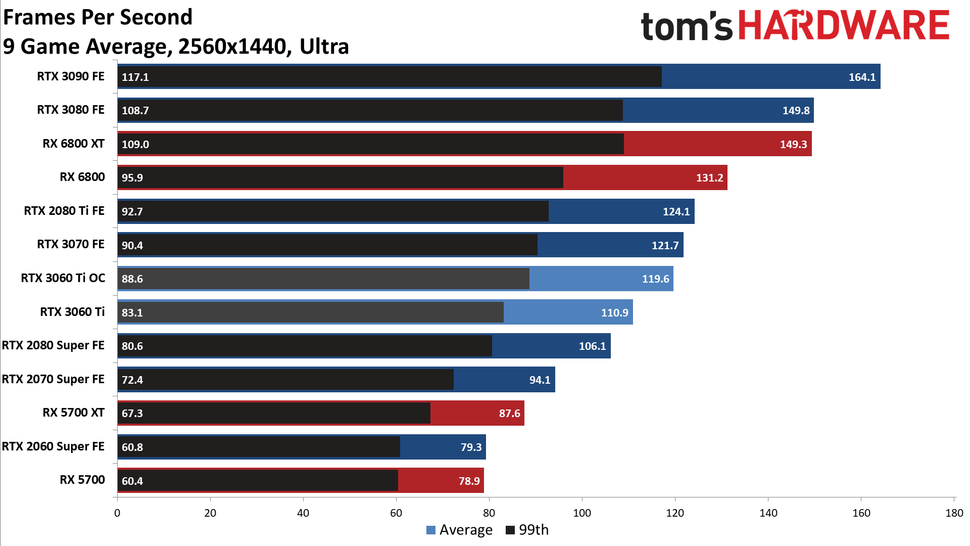
Performance Summary
Here’s a look at the 14 game average data running at 1080p. The RTX 3060 is just 6% faster than the RX 5700, which is not great considering the MSRP is ~6% lower. When compared to the two-year-old AMD GPU, you’re getting on average 6% more performance for what should be a 6% price saving, amazing stuff.
Compared to Nvidia’s previous offerings, the RTX 3060 looks a bit more impressive, offering 15% more performance than the two-year-old RTX 2060 Super which cost 18% less. Of course, Turing was never great value, but looking exclusively at Nvidia products, the 3060 is quite good.
The 1440p data tells a similar story, where the RTX 3060 is on average 8% faster than the RX 5700 and 5% slower than the 5700 XT. It’s also 17% faster than the RTX 2060 Super and 22% slower than the 3060 Ti.
Cost per Frame
Now let’s take a look at the controversial MSRP-based cost per frame data. There are RTX 3060 cards listed for $330 at several retailers including Newegg, but whether or not they’ll ever have stock for those models is hard to say. They certainly don’t right now and that’s hardly surprising. When compared to AMD, the situation does look better, the RX 6800 for example has an MSRP of $580, yet the cheapest model over on Newegg is $680 with most priced well over $700 and all out of stock.
They certainly don’t right now and that’s hardly surprising. When compared to AMD, the situation does look better, the RX 6800 for example has an MSRP of $580, yet the cheapest model over on Newegg is $680 with most priced well over $700 and all out of stock.
It’s possible that MSRP pricing for out of stock GeForce cards is a ploy to claim the MSRP at launch, with card makers advertising base model cards that won’t get stocked anytime soon. We can’t say if that theory is correct though, given we’ve heard from people who managed to snap up RTX 3070 and RTX 3080 models at the MSRP at some point. Whatever the case may be, supply of those models is even more limited and clearly for the vast majority of shoppers the MSRP means nothing.
Those reading weeks or months into the future, when GPUs are back to regular pricing, here’s how the RTX 3060 stacks up at the claimed MSRP…
For $330, the GeForce RTX 3060 is slightly worse than the 3060 Ti in terms of cost per frame, coming in at a 6% premium. Given the RTX 3060 Ti is 12% better value than the RTX 3070, you’d expect the 3060 to cost no more than $280, so $50 less than the actual MSRP. Compared to previous-gen GPUs such as the Radeon 5700 XT, the RTX 3060 is just a 14% improvement in cost per frame.
Given the RTX 3060 Ti is 12% better value than the RTX 3070, you’d expect the 3060 to cost no more than $280, so $50 less than the actual MSRP. Compared to previous-gen GPUs such as the Radeon 5700 XT, the RTX 3060 is just a 14% improvement in cost per frame.
As of writing, major tech retailers didn’t have a single RTX 3080, 3070, 3060 Ti or 3060 in stock. Even the bundles where you have to buy a motherboard and memory were out of stock. That means if you want to buy a graphics card now, your best bet is to pay scalper prices over on eBay, something we strongly recommend you resist doing.
In the following graph we’re looking at the average sale price of completed listings for new products over the past week on eBay. We’ve manually gathered this data and any dodgy listings, like a $500 RTX 3090, for example, were ignored.
Of this bunch, the cheapest model was the GeForce RTX 2060 for $505 on average, roughly a 45% increase over the MSRP, resulting in a cost per frame of $8. 01 when it should be $5.55.
01 when it should be $5.55.
The RTX 3060 comes in at $9.44 per frame, and while that does make it the cheapest of the GeForce 30 series, it was only a percent cheaper than the RTX 3070.
Admittedly though, this data is meaningless when you consider the average sale price of the RTX 3060 was $793, a staggering 140% markup over the MSRP. Certainly no one should pay that for an RTX 3060, but that’s the bleak and realistic outlook for cards that are more readily available.
Ray Tracing and DLSS Performance
Before wrapping up, we wanted to take a quick look at ray tracing and DLSS performance along with power consumption and overclocking. For ray tracing testing, do note we’re using the second highest quality preset for the three games, so not the minimum in-game quality settings. We’re also testing at 1440p only (and not 1080p) as that makes better sense when you’re prioritizing visual quality over high frame rates.
In Watch Dogs Legion at 1440p, the RTX 3060 was good for just 62 fps on average at the native resolution.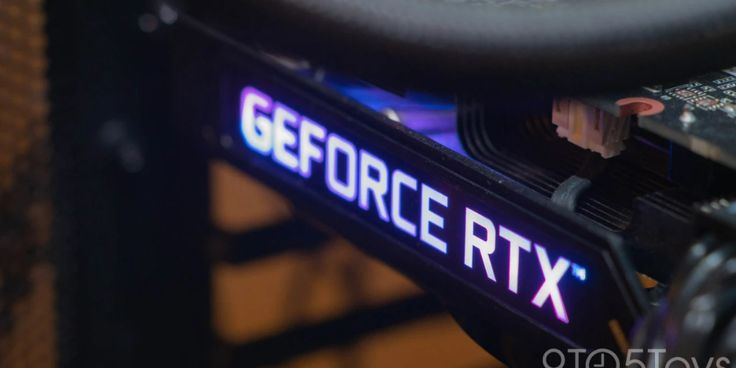 Enabling quality DLSS boosted the frame rate by 30% to 81 fps, a very nice performance upgrade.
Enabling quality DLSS boosted the frame rate by 30% to 81 fps, a very nice performance upgrade.
With medium quality ray tracing enabled with DLSS, the frame rate dropped below 60 fps to 54 fps on average. Not amazing, but certainly still playable. Then with ultra-quality ray tracing the frame rate dropped to 49 fps, not great but the game is still playable depending on your requirements. Without the aid of DLSS the game was unplayable using ray tracing on the RTX 3060 at 1440p as frame rates dropped well below 40 fps.
When compared to the RTX 2060, the 3060 was 13% faster when comparing native performance or DLSS-enabled performance. However, with ray tracing enabled the RTX 3060 was much more efficient, delivering up to 26% better performance.
This also shows just how poorly AMD’s RDNA2 GPUs perform with ray tracing enabled, at least in these Nvidia optimized titles. Here the RX 6800 was 65% faster than the RTX 3060 without ray tracing, but with it enabled the Radeon GPU was just 31% faster and 16% faster with the ultra quality RT setting.
Shadow of the Tomb Raider only uses ray tracing for shadows and DLSS doesn’t work nearly as well in this title, offering almost no performance uplift without ray tracing enabled. This time the RTX 3060 was 16-20% faster than the 2060 with ray tracing, while it was 11% faster for straight rasterization performance.
The performance uplift offered by DLSS in Control is massive. The RTX 3060 was 61% faster with DLSS enabled, so medium quality ray tracing with DLSS enabled was able to match native resolution performance, though do keep in mind we’re only testing the game using the medium quality preset.
The GeForce RTX 3060 was 25% faster than the RTX 2060 for rasterization performance and we saw similar margins with ray tracing and DLSS enabled.
Power Consumption
The RTX 3060 isn’t particularly impressive in the power consumption front, using only slightly less power than the RTX 3060 Ti, or at least that was the case for the Gigabyte RTX 3060 Eagle model we used for testing. When compared to the RTX 3060 Ti, we’re looking at a mere 2% reduction in total system power usage.
When compared to the RTX 3060 Ti, we’re looking at a mere 2% reduction in total system power usage.
Here’s a better look at graphics card power consumption using PCAT. We find that the RTX 3060 does consume 12% less power than the 3060 Ti, but given it was on average 22% slower, that’s not a good result for power efficiency. It’s a little more efficient than the 2060 Super, for example, consuming 6% more power for 17% more performance on average, not amazing but it’s an improvement.
A very brief look at overclocking has the Gigabyte Eagle RTX 3060 overclocked from the stock boost frequency of 1777 MHz up to 1997 MHz, which resulted in a sustained in-game clock speed of 2.1 GHz. The memory also overclocked from the stock 15 Gbps transfer speed to 17.2 Gbps.
This manual overclock improved performance in Shadow of the Tomb Raider by 10%, taking the average frame rate from 83 fps up to 91 fps to match the RTX 2070 Super in this title. That’s a pretty typical Ampere overclock.
What We Learned
Under normal conditions, as in you could buy graphics cards around the MSRP, the GeForce RTX 3060 would be a bit of a flop. It brings nothing new to the table, it’s technically worse value than the RTX 3060 Ti, and while it does pack more VRAM, at this price point 8GB is enough, at least for now.
Put the VRAM factor aside and you can see the RTX 3060 has very little going for it. For RTX 2060 owners it’s a very small upgrade, and it’s almost a side grade for 2060 Super owners, while it’s a downgrade for anyone with a 5700 XT.
If you own a GPU from a prior generation, like the GTX 1060 or even at GTX 1070, then the RTX 3060 is a decent upgrade in terms of performance, but you’d be better off spending a little more on the Ti version or waiting to see what AMD does at this price point.
Which of course, brings us to the present situation. At the moment, Nvidia has no incentive to make the RTX 3060 a killer value. Nvidia can still present this price point and sell as many cards as they can produce, evidenced by the fact that it sold out instantly. Even if the market returned to normalcy later in 2021 — something we’re not expecting — Nvidia could simply refresh the 3060 series with a Super variant and adjust pricing to whatever is appropriate then.
Even if the market returned to normalcy later in 2021 — something we’re not expecting — Nvidia could simply refresh the 3060 series with a Super variant and adjust pricing to whatever is appropriate then.
Bottom line, the GeForce RTX 3060 isn’t a bad product, it’s technically very good, but pricing is simply not attractive to make it a compelling upgrade — but wait — all of that won’t matter right now as gamers and miners fight over any GPU stock available. Until things improve, we don’t expect Nvidia or AMD to release any good value GPUs while demand remains exceedingly high.
Shopping Shortcuts:
- Nvidia GeForce RTX 3060 on Amazon
- Nvidia GeForce RTX 3060 Ti on Amazon
- Nvidia GeForce RTX 3070 on Amazon
- Nvidia GeForce RTX 3080 on Amazon
- AMD Radeon RX 6800 on Amazon
- AMD Ryzen 9 5950X on Amazon
- AMD Ryzen 9 5900X on Amazon
- AMD Ryzen 5 5600X on Amazon
Nvidia GeForce RTX 3060 review: It’s fine
Reviews
Nvidia’s GeForce RTX 3060 is a competent graphics card in a time where being good enough is all it takes to sell out.
By Brad Chacos
PCWorld Mar 12, 2021 3:32 am PST
Image: Brad Chacos/IDG
At a Glance
Expert’s Rating
Pros
- No-compromises 1080p gaming
- 12GB of memory
- Nvidia’s excellent software/features: G-Sync, DLSS, Reflex, and more
- EVGA’s XC Black Gaming is small, cool, and quiet
Cons
- 1440p gaming often requires visual tweaks to hit 60fps
- Slightly more performance, slightly less price vs. last gen
- MSRP is higher than we’d like
- Hard to find at MSRP in today’s wild GPU market
- No backplate or other frills in EVGA’s XC Black Gaming
Our Verdict
Nvidia’s GeForce RTX 3060 is an okay graphics card for no-compromises 1080p gaming in a time where being good enough is all it takes to sell out. EVGA’s custom XC Black Gaming version offers no frills but runs cool and quiet.
Best Prices Today: GeForce RTX 3060 XC Black Gaming
The $329 GeForce RTX 3060 finally brings Nvidia’s next-gen Ampere GPU architecture to the mainstream masses—at least in theory.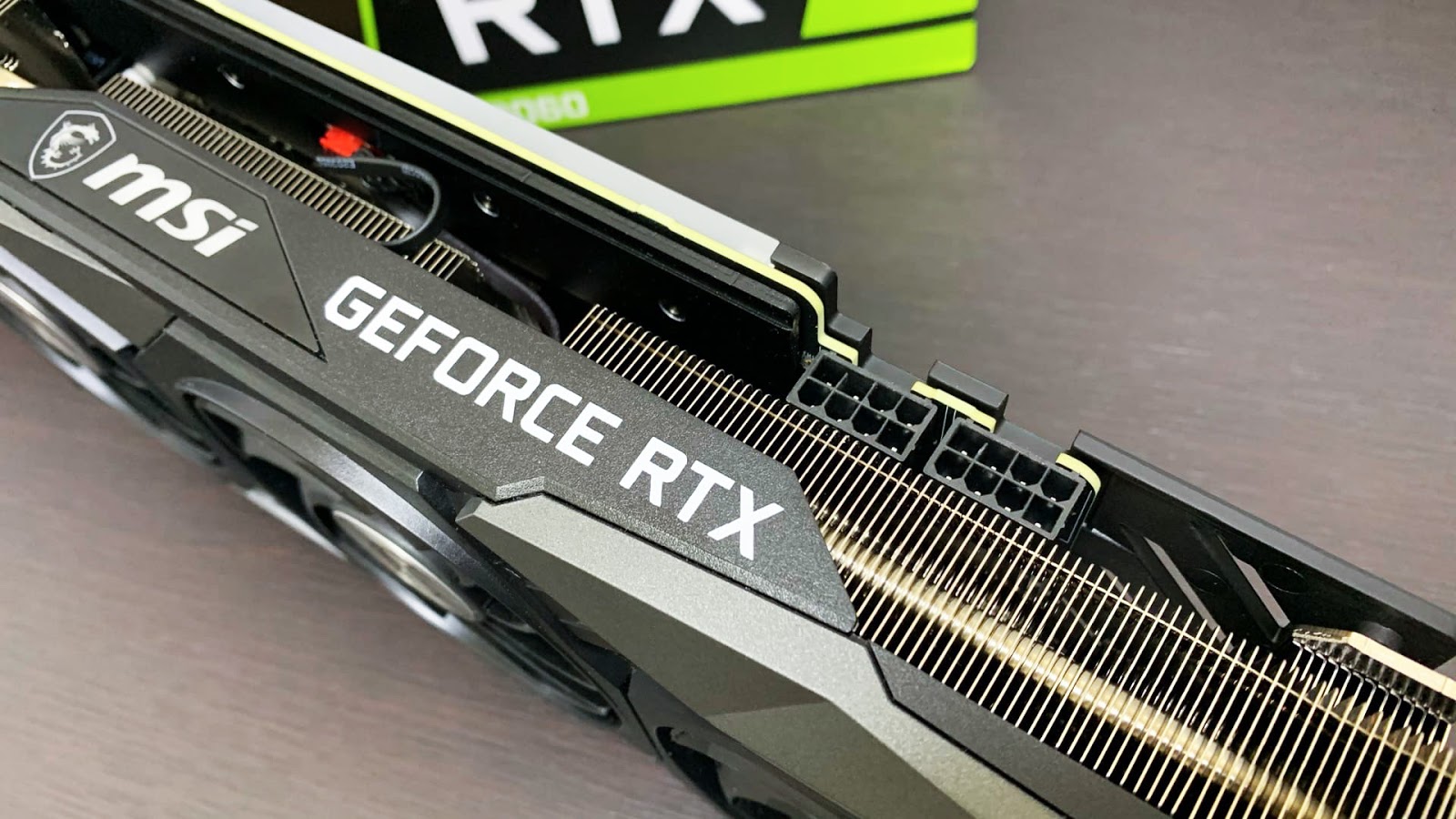
Normally, the release of Nvidia’s 60-class graphics cards sparks a lot of excitement. They tend to be the best-selling card of a GeForce generation. This time around, graphics cards are mired in a months-long shortage driven by a mixture of sky-high demand, logistics woes caused by the pandemic, a cryptocurrency boom that’s driving miners to gobble up GPUs, and some component shortages. Nvidia also priced this card higher than historical norms (the beloved GTX 1060 this card hopes to replace launched at $80 less). It’s a perfect storm, and things are so bad that Nvidia brought the ancient GTX 1050 Ti out of retirement.
But put all that aside. How does Nvidia’s new GPU actually handle? The company sent us an EVGA GeForce RTX 3060 XC Black Gaming to determine just that. This entry-level spin on the GPU is priced at the RTX 3060’s $329 MSRP (again, in theory). If we had to describe the graphics card in one word? It’s fine. It’s okay. That said, there are some key under-the-hood features definitely worth noting.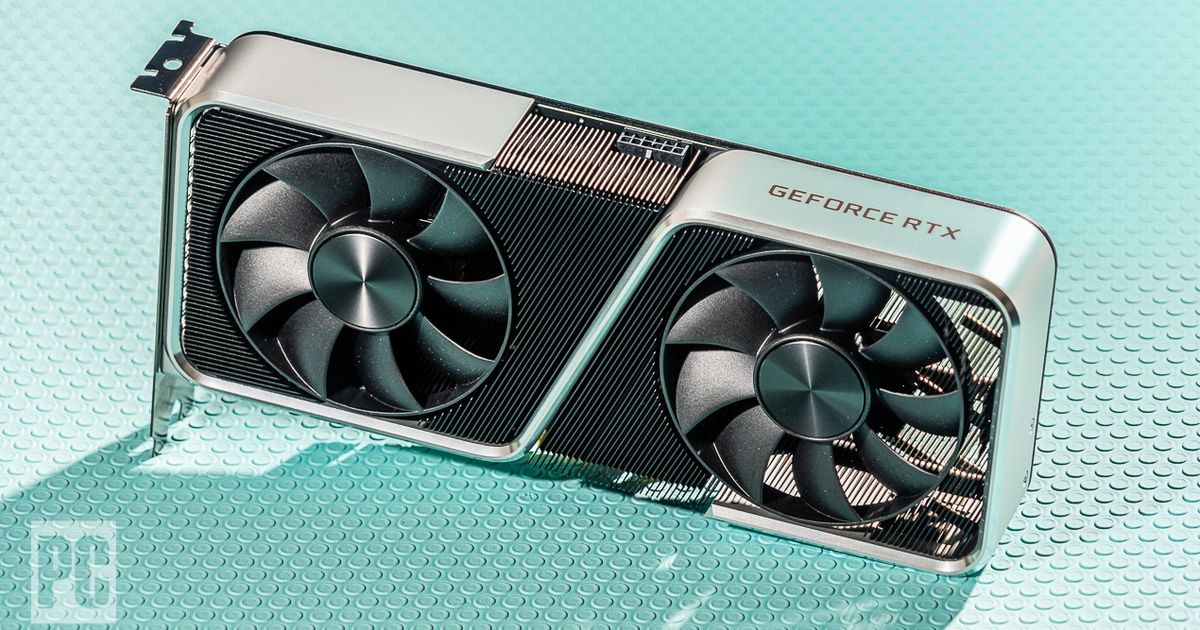
Before we wade into pages of benchmark results, if you want a faster, easier-to-read analysis of the card, be sure to check out our complementary coverage, GeForce RTX 3060: 5 key things you need to know about Nvidia’s new GPU. Now let’s dig in.
GeForce RTX 3060 specs, features, and price
In an unusual turn of events, Nvidia released the step-up GeForce RTX 3060 Ti before the base RTX 3060, and that Ti version is a spectacular 1440p gaming option. The more affordable (in theory) GeForce RTX 3060 more closely targets no-compromises 1080p gaming, though 1440p gaming is certainly possible in most cases. The non-Ti RTX 3060 uses a totally different GPU—the smaller GA106 graphics chip, rather than the beefier GA104 chip found in the Ti model and the $500 RTX 3070. Because of that, while the RTX 3060 and 3060 Ti share the same name, they’re wildly different under the hood.
Here’s how the GeForce RTX 3060 stacks up technically against the RTX 3060 Ti…
Nvidia
…and last-generation’s $350 GeForce RTX 2060.
Nvidia
The GeForce RTX 3060 sports a slightly higher boost clock than its Ti cousin—which matters during gaming sessions that load up the GPU—but dramatically fewer CUDA cores. That drags the overall gaming performance far below the 3060 Ti’s level, though the new graphics card remains competitive for the segments it targets.
The most interesting part of the RTX 3060’s design is its memory. This GPU is paired with an ample 12GB of GDDR6 VRAM, besting the 8GB of GDDR6 in the RTX 3060 Ti and 3070, and even the 10GB available in the beastly GeForce RTX 3080 (although that’s of the much-faster GDDR6X variety). It’s clear that AMD’s decision to load up its new Radeon RX 6000-series graphics cards with plenty of memory caught Nvidia by surprise. The 192-bit memory bus on the RTX 3060 can handle either 6GB or 12GB capacities, and we suspect the RTX 3060 was originally intended to receive 6GB before AMD struck.
Nvidia
Resizable BAR lets the CPU tap fully into the GPU’s memory, offering performance gains in some scenarios.
It’s probably the right choice from a marketing perspective—AMD’s forthcoming Radeon RX 6700 XT will indeed come with 12GB of its own—but practically, it’s a bit weird. The big 12GB memory buffer is overkill for the 1080p gaming Nvidia claims this card was built for. If you nudge games up to 1440p, you’ll often need to reduce graphics settings to achieve 60 frames per second at that resolution, which similarly reduces memory demands. If this wasn’t a rushed response to AMD’s moves, 8GB of memory would suffice–and cost less. Going with 6GB of memory would’ve been too little now that some games are pushing the 8GB barrier more regularly, however, so as-is, we’re glad to see the RTX 3060 ship with 12GB. Overkill is better than undershooting!
The GeForce RTX 3060 is also Nvidia’s first desktop graphics card to support the PCIe Resizable BAR feature, following in the footsteps of AMD’s Smart Access Memory (which is based around ReBAR). Resizable BAR lets your CPU see your graphics card’s memory, rather than accessing it in 256MB chunks, which can result in performance gains on compatible systems. Most of those gains are modest, as we discovered testing Smart Access Memory on the RX 6900 XT, but they can go all the way to 10 percent or more in the right games, running the right graphics settings and resolutions. ReBAR’s uplift is highly variable.
Most of those gains are modest, as we discovered testing Smart Access Memory on the RX 6900 XT, but they can go all the way to 10 percent or more in the right games, running the right graphics settings and resolutions. ReBAR’s uplift is highly variable.
Nvidia
You’ll need a compatible CPU and motherboard to enable Resizable BAR support, however. AMD kicked it off with its Ryzen 5000 processors and X570/B550 motherboards, though compatibility has also come to a variety of Intel platforms via BIOS updates. The image above, taken from Nvidia’s ReBAR explainer, shows which PC hardware currently supports the technology. Support varies from vendor to vendor and even motherboard to motherboard. If you want to use it, look for a compatible BIOS update for your specific motherboard. Currently, Nvidia activated ReBAR compatibility for only eight titles, so its usefulness is very limited. Nvidia says it will whitelist new games quickly. (AMD’s Smart Access Memory works with all games.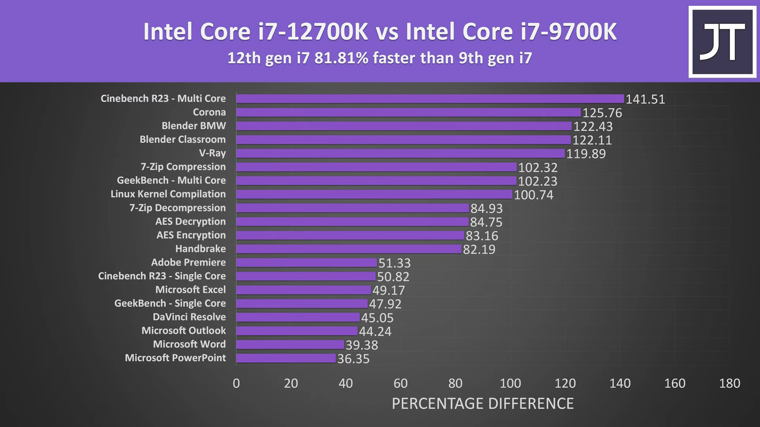 )
)
Nvidia also added a hashrate limiter that cuts the performance of Ethereum mining in half, which should hopefully discourage cryptocurrency miners from snatching this up in droves. We’ll see if it lasts.
Of course, as a modern GeForce GPU, the RTX 3060 includes the latest ray tracing and tensor cores inside (we’ll dig into that later), as well as support for all of Nvidia’s wide range of value-adding features, such as Shadowplay, DLSS, Nvidia Broadcast, Nvidia Reflex, G-Sync, and more. For a deeper look at what’s new in the RTX 30-series “Ampere” GPU architecture, check out our much more detailed explanation in the beginning of our RTX 3080 review.
Brad Chacos/IDG
Nvidia isn’t rolling out one of its snazzy Founders Edition models for the RTX 3060, relying instead on custom cards from its partners to carry the load in today’s scorching-hot graphics card market. (GTX 1060 and RTX 2060 FE models hit the streets, for reference.) So the company sent over EVGA’s GeForce RTX 3060 XC Black Gaming for us to test.
The XC Black Gaming sticks to the RTX 3060’s reference specs under the hood, which helps it hit the GPU’s $329 retail price. That helps us evaluate the RTX 3060’s baseline performance, though if previous RTX 30-series and Radeon RX 6000-series launches are any indication, we expect graphics card makers to put most of their focus (and manufacturing output) on pricier custom models, like EVGA’s own overclocked, $390 RTX 3060 XC Gaming (no “Black”). Most of the early custom RTX 3060 models available in stores cost closer to $500 even before scalpers get their hands on them. Don’t expect to be able to find RTX 3060 cards on sale for $330 in reality while the current GPU crunch remains in effect.
Brad Chacos/IDG
EVGA designed the XC Black Gaming well despite its MSRP pricing. As you’ll see later, the card runs very cool and very quiet. Unlike most other custom RTX 30-series graphics cards, the XC Black Gaming sticks to a traditional two-slot thickness that should have no problem fitting into most PC cases, especially because the card measures a mere 7. 94 inches in length—well shorter than the usual 10.5 inches-plus. It also requires just a single 8-pin power connector, hooked up to a recommended power supply of 550 watts or more.
94 inches in length—well shorter than the usual 10.5 inches-plus. It also requires just a single 8-pin power connector, hooked up to a recommended power supply of 550 watts or more.
Cost-cutting measures can easily be spotted. The shroud is plastic, there’s no RGB lighting to be found, and there’s no backplate to hide circuitry. There is a cut-out in the PCB to allow air to flow through the heat sink and out of your card, however, following the new RTX 30-series trend. The lack of a backplate makes the EVGA XC Black Gaming a bit of an eyesore in an era where backplates have largely become the norm, but it’s otherwise inoffensive aesthetically, with a blacked-out design. You’ll find the standard RTX 30-series connection loadout—one HDMI 2.1 port and three DisplayPorts—on EVGA’s card.
Brad Chacos/IDG
EVGA supports its hardware with a warranty and customer service representatives beloved by the gaming community. If you want to put the dual-axial fans and four copper heatpipes to more work, the company’s sublime Precision X1 GPU management software contains everything you need to monitor and overclock the card. The slickly designed program is one of our favorites.
The slickly designed program is one of our favorites.
But now the stage is set. Let’s get to the benchmarks.
Next page: Our test system, gaming benchmarks begin
Our test system
We’re in the process of moving to a new AMD Ryzen 5000-series test rig to be able to benchmark the effect of PCIe 4.0 support on modern GPUs, as well as the performance-boosting AMD Smart Access Memory and Nvidia Resizable BAR features (which are both based on the same underlying PCIe standard). Currently, we’re testing it on an open bench with AMD’s Wraith Max air cooler; in the future, we’ll be moving the setup into a case and adding an NZXT Kraken liquid cooler to the mix. Most of the hardware was provided by the manufacturers, but we purchased the storage ourselves.
- AMD Ryzen 5900X, stock settings
- AMD Wraith Max cooler
- MSI Godlike X570 motherboard
- 32GB G.Skill Trident Z Neo DDR4 3800 memory
- EVGA 1200W SuperNova P2 power supply ($352 on Amazon)
- 1TB SK Hynix Gold S31 SSD
Mentioned in this article
GeForce RTX 3060 Ti FTW3 Ultra
We’re comparing the $330 EVGA GeForce RTX 3060 XC Black Gaming against last generation’s $350 Nvidia RTX 2060 Founders Edition, as well as the Founders Edition model of the newer $500 RTX 3070.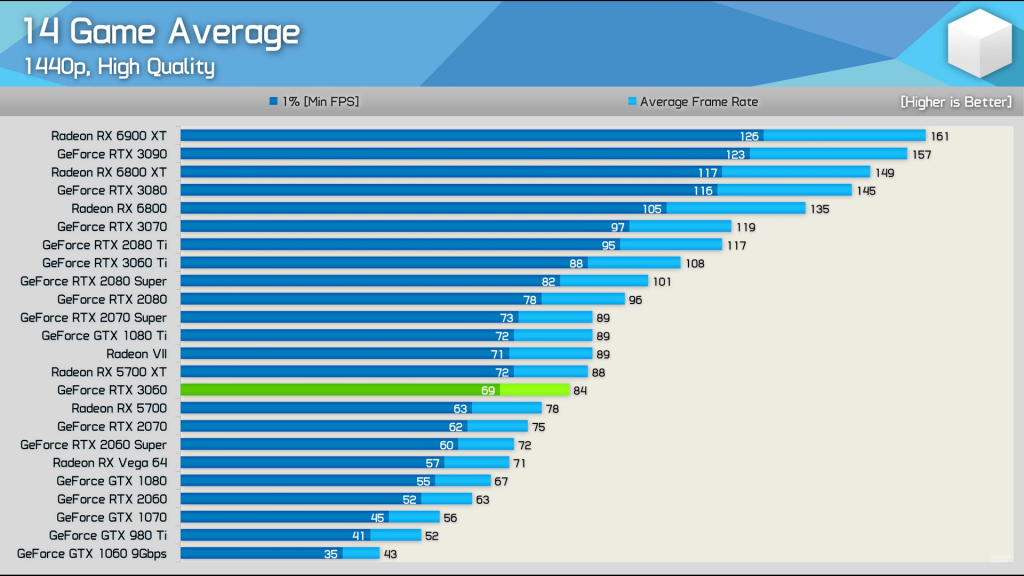 We also included EVGA’s overclocked, custom FTW3 Ultra version of the $400 RTX 3060 Ti as we didn’t have Nvidia’s FE card immediately on hand. Rounding things out, we also show benchmarks for AMD’s $350 Radeon RX 5700 and $400 Radeon RX 5700 XT. We didn’t have time to fully benchmark the $400 RTX 2060 Super FE and $500 RTX 2070 on the new system yet, alas.
We also included EVGA’s overclocked, custom FTW3 Ultra version of the $400 RTX 3060 Ti as we didn’t have Nvidia’s FE card immediately on hand. Rounding things out, we also show benchmarks for AMD’s $350 Radeon RX 5700 and $400 Radeon RX 5700 XT. We didn’t have time to fully benchmark the $400 RTX 2060 Super FE and $500 RTX 2070 on the new system yet, alas.
We test a variety of games spanning various engines, genres, vendor sponsorships (Nvidia, AMD, and Intel), and graphics APIs (DirectX 11, DX12, and Vulkan). Each game is tested using its in-game benchmark at the highest possible graphics presets unless otherwise noted, with VSync, frame rate caps, real-time ray tracing or DLSS effects, and FreeSync/G-Sync disabled, along with any other vendor-specific technologies like FidelityFX tools or Nvidia Reflex. We’ve also enabled temporal anti-aliasing (TAA) to push these cards to their limits. We run each benchmark at least three times and list the average result for each test.
We won’t be providing commentary for each game’s results. For overall performance evaluations, check out our final “Should you buy it?” section of this review.
For overall performance evaluations, check out our final “Should you buy it?” section of this review.
Gaming performance benchmarks
Watch Dogs: Legion
Watch Dogs: Legion is one of the first games to debut on next-gen consoles. Ubisoft upgraded its Disrupt engine to include cutting-edge features like real-time ray tracing and Nvidia’s DLSS. We disable those effects for this testing, but Legion remains a strenuous game even on high-end hardware with its optional high-resolution texture pack installed. The game allocates more than 8GB of memory even at 1440p. Oof.
Brad Chacos/IDG
Horizon Zero Dawn
Yep, PlayStation exclusives are coming to the PC now. Horizon Zero Dawn runs on Guerrilla Games’ Decima engine, the same engine that powers Death Stranding. It launched in a rough state but handles much better now, and it’s a looker.
Brad Chacos/IDG
Next page: gaming benchmarks continue
Gears Tactics
Gears Tactics puts it own brutal, fast-paced spin on the XCOM-like genre. This Unreal Engine 4-powered game was built from the ground up for DirectX 12, and we love being able to work a tactics-style game into our benchmarking suite. Better yet, the game comes with a plethora of graphics options for PC snobs. More games should devote such loving care to explaining what flipping all these visual knobs mean.
This Unreal Engine 4-powered game was built from the ground up for DirectX 12, and we love being able to work a tactics-style game into our benchmarking suite. Better yet, the game comes with a plethora of graphics options for PC snobs. More games should devote such loving care to explaining what flipping all these visual knobs mean.
You can’t use the presets to benchmark Gears Tactics, as it intelligently scales to work best on your installed hardware, meaning that “Ultra” on one graphics card can load different settings than “Ultra” on a weaker card. We manually set all options to their highest possible settings.
Brad Chacos/IDG
Wolfenstein: Youngblood
Wolfenstein: Youngblood is more fun when you can play cooperatively with a buddy, but it’s a fearless experiment—and an absolute technical showcase. Running on the Vulkan API, Youngblood achieves blistering frame rates, and it supports all sorts of cutting-edge technologies like ray tracing, DLSS 2. 0, HDR, GPU culling, asynchronous computing, and Nvidia’s Content Adaptive Shading. The game includes a built-in benchmark with two different scenes; we now test Riverside.
0, HDR, GPU culling, asynchronous computing, and Nvidia’s Content Adaptive Shading. The game includes a built-in benchmark with two different scenes; we now test Riverside.
Brad Chacos/IDG
Metro Exodus
One of the best games of 2019, Metro Exodus remains one of the best-looking games around, too. The latest version of the 4A Engine provides incredibly luscious, ultra-detailed visuals, with one of the most stunning real-time ray tracing implementations released yet. The Extreme graphics preset we benchmark can melt even the most powerful modern hardware, as you’ll see below, though the game’s Ultra and High presets still look good at much higher frame rates.
We test in DirectX 12 mode with ray tracing, Hairworks, and DLSS disabled.
Brad Chacos/IDG
Borderlands 3
Borderlands is back! Gearbox’s game defaults to DX12, so we do as well. It gives us a glimpse at the ultra-popular Unreal Engine 4’s performance in a traditional shooter. This game tends to favor AMD hardware.
This game tends to favor AMD hardware.
Brad Chacos/IDG
Strange Brigade
Strange Brigade is a cooperative third-person shooter where a team of adventurers blasts through hordes of mythological enemies. It’s a technological showcase, built around the next-gen Vulkan and DirectX 12 technologies and infused with features like HDR support and the ability to toggle asynchronous compute on and off. It uses Rebellion’s custom Azure engine. We test using the Vulkan renderer, which is faster than DX12.
Brad Chacos/IDG
Next page: gaming benchmarks continue
Total War: Troy
The latest game in the popular Total War saga, Troy was given away free for its first 24 hours on the Epic Games Store, moving over 7.5 million copies before it went on proper sale. Total War: Troy is built using a modified version of the Total War: Warhammer 2 engine, and this DX11 title looks stunning for a turn-based strategy game.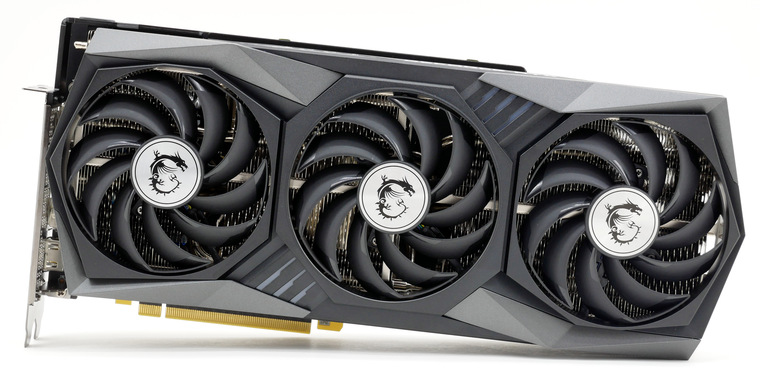 We test the more intensive battle benchmark.
We test the more intensive battle benchmark.
Brad Chacos/IDG
F1 2020
The latest in a long line of successful racing games, F1 2020 is a gem to test, supplying a wide array of both graphical and benchmarking options, making it a much more reliable (and fun) option that the Forza series. It’s built on the latest version of Codemasters’ buttery-smooth Ego game engine, complete with support for DX12 and Nvidia’s DLSS technology. We test two laps on the Australia course, with clear skies on and DLSS off.
Brad Chacos/IDG
Shadow of the Tomb Raider
Shadow of the Tomb Raider concludes the reboot trilogy, and it’s still utterly gorgeous a couple of years after its debut. Square Enix optimized this game for DX12 and recommends DX11 only if you’re using older hardware or Windows 7, so we test with DX12. Shadow of the Tomb Raider uses an enhanced version of the Foundation engine that also powered Rise of the Tomb Raider and includes optional real-time ray tracing and DLSS features.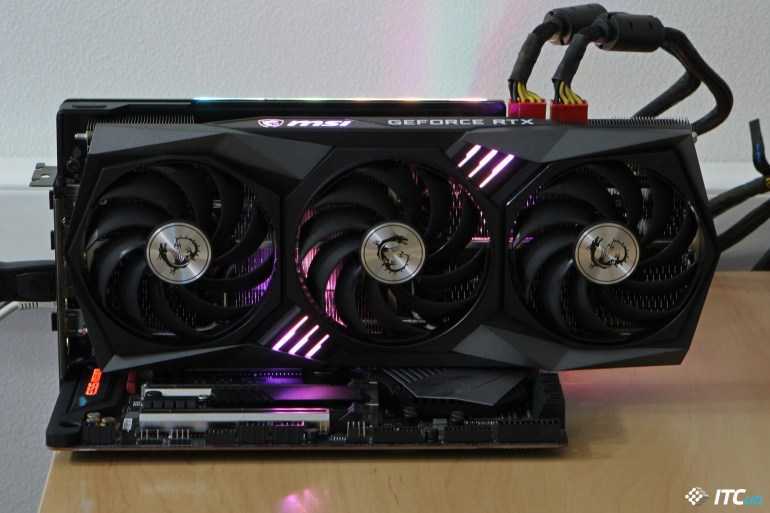
Brad Chacos/IDG
Rainbow Six Siege
Rainbow Six Siege still dominates the Steam charts years after its launch, and Ubisoft supports it with frequent updates and events. The developers have poured a ton of work into the game’s AnvilNext engine over the years, eventually rolling out a Vulkan version of the game that we use to test. By default, the game lowers the render scaling to increase frame rates, but we set it to 100 percent to benchmark native rendering performance on graphics cards. Even still, frame rates soar.
Brad Chacos/IDG
Next page: RTX 3060 ray tracing performance
RTX 3060 ray tracing performance
We also benchmarked the RTX 3060 in a handful of titles that support cutting-edge real-time ray tracing effects. While the newer AMD Radeon RX 6000-series GPUs now support ray tracing, older models don’t, so we excluded the Radeon RX 5700 and 5700 XT from these results.
Nvidia holds a key advantage in ray-traced games thanks to its Deep Learning Super Sampling technology (DLSS), which leverages AI tensor cores embedded in RTX GPUs to internally render games at a lower resolution, then uprez them to your desired resolution using machine learning to fill in the gaps.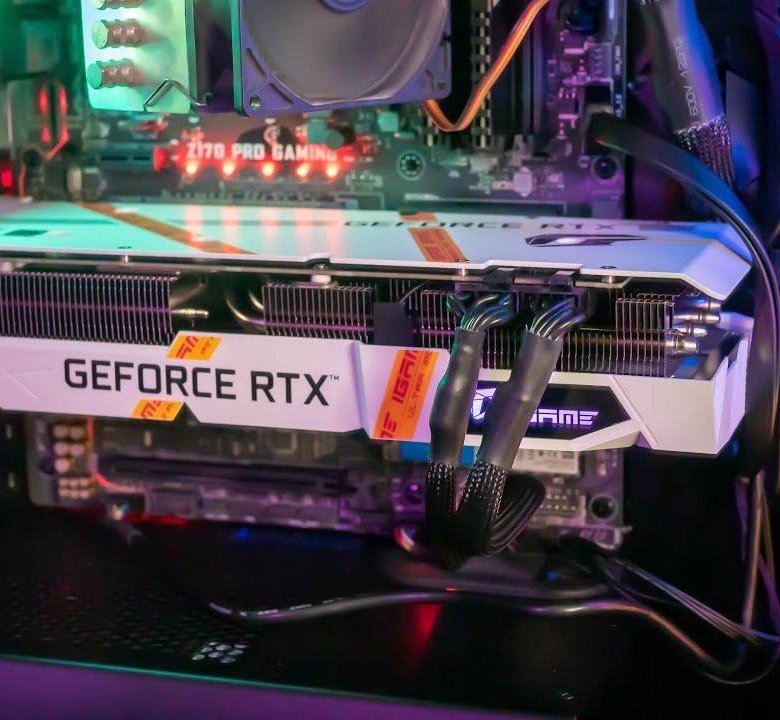 DLSS 2.0 works like black magic and gives Nvidia a strong lead in ray tracing performance. Without it, you usually can’t run ray-traced games above 1080p resolution.
DLSS 2.0 works like black magic and gives Nvidia a strong lead in ray tracing performance. Without it, you usually can’t run ray-traced games above 1080p resolution.
The Nvidia GPUs we included below all support DLSS, however, and we’ve shown three results for each card: native performance with ray tracing off, native performance with ray tracing on, and performance when both ray tracing and DLSS are active.
We plan to expand our ray-traced game suite soon, but for now we’re giving Watch Dogs: Legion, Metro: Exodus and Shadow of the Tomb Raider a whirl to put the capabilities to the test, with ray tracing options set to Ultra in each title. Legion packs ray-traced reflections, Tomb Raider includes ray-traced shadows, and Metro features more strenuous (and mood-enhancing) ray-traced global illumination.
Let’s kick things off with Shadow of the Tomb Raider’s ray-traced shadows. The game includes the first-generation version of DLSS, which doesn’t support 1080p resolution, so we’ve stuck to raw ray tracing performance only there.
Brad Chacos/IDG Brad Chacos/IDG
Metro: Exodus uses ray tracing for global illumination. It also uses DLSS 1.0 and doesn’t support the upscaling feature at 1080p, so we’ve only included raw ray tracing performance on that chart.
Brad Chacos/IDG Brad Chacos/IDG
Watch Dogs: Legion hammers your system regardless of whether you have ray tracing on, at least with the high-resolution texture pack installed. Activating the ray-traced reflections exacerbates the issue. Unlike Tomb Raider and Metro, Watch Dogs uses the faster, better DLSS 2.0 technology. We test it with DLSS Balanced mode active. Balanced lets you hit higher frame rates than the Quality mode, but the even faster Performance mode starts to introduce visual differences you can notice in some scenes. Balanced hits the sweet spot.
Balanced hits the sweet spot.
Brad Chacos/IDG Brad Chacos/IDG
Next page: Power, thermals, and noise
Power draw, thermals, and noise
We test power draw by looping the F1 2020 benchmark at 4K for about 20 minutes after we’ve benchmarked everything else and noting the highest reading on our Watts Up Pro meter, which measures the power consumption of our entire test system. The initial part of the race, where all competing cars are onscreen simultaneously, tends to be the most demanding portion.
This isn’t a worst-case test; this is a GPU-bound game running at a GPU-bound resolution to gauge performance when the graphics card is sweating hard. If you’re playing a game that also hammers the CPU, you could see higher overall system power draws. Consider yourself warned.
Brad Chacos/IDG
The EVGA GeForce RTX 3060 XC Black Gaming draws a bit more power than the RTX 2060, which makes sense given its slightly higher power requirements. This GPU’s energy requirements aren’t as staggering as they are for the higher-end RTX 30-series GPUs. It’ll be interesting to see how AMD’s eventual Radeon rivals will compare.
This GPU’s energy requirements aren’t as staggering as they are for the higher-end RTX 30-series GPUs. It’ll be interesting to see how AMD’s eventual Radeon rivals will compare.
Interestingly, Nvidia GPUs prevent the computer from fully going into idle in the five minutes of downtime we use for this test, though it does so after a longer duration. That’s new to this Ryzen 5900X platform; we didn’t see it on our old Intel-based testbeds, nor with AMD Radeon graphics cards installed. We’ll have to change our methodology going forward and poke around the behavior to understand it more fully.
We test thermals by leaving GPU-Z open during the F1 2020 power draw test, noting the highest maximum temperature at the end.
Brad Chacos/IDG
EVGA’s XC Black Gaming runs very quiet and impressively cool, taming the modest RTX 3060 GPU with ease. No complaints whatsoever. The blower-style coolers on the last-gen Radeon cards sure are warm and loud, though.
Next page: Should you buy the GeForce RTX 3060?
Should you buy the GeForce RTX 3060?
It’s hard to recommend buying any graphics card right now.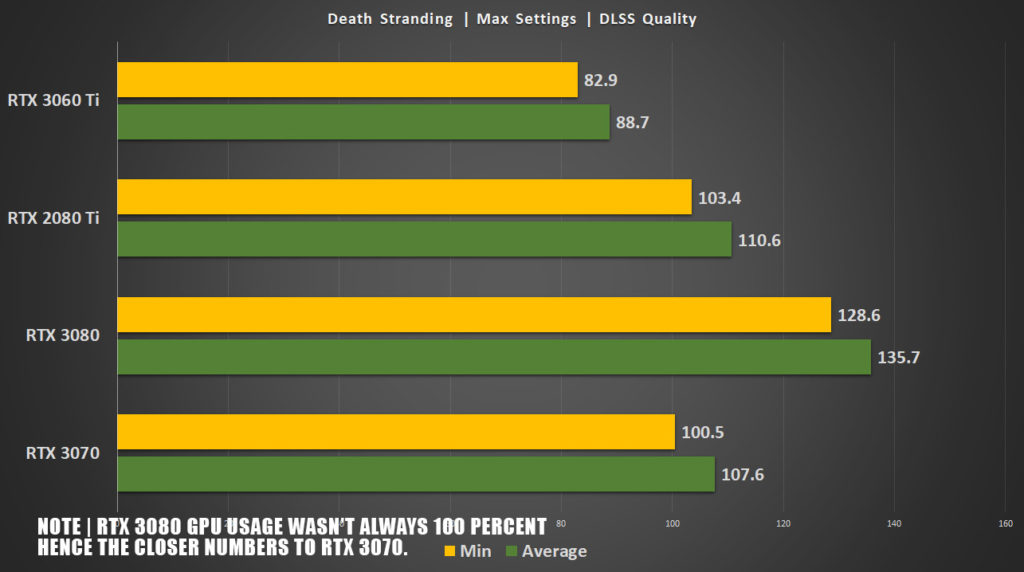 Overwhelming demand, supply woes, tariffs, scalpers, and cryptocurrency miners have sent availability plummeting and prices skyrocketing. Currently, a couple of weeks after launch, there is no stock available at any major etailer. Most custom models cost closer to $500 even before scalping begins. You can’t blame the manufacturers for hopping on the gravy train, but if you wind up seeing any RTX 3060 going for $330 in the wild anytime near the publication date of this review, hop on it pronto.
Overwhelming demand, supply woes, tariffs, scalpers, and cryptocurrency miners have sent availability plummeting and prices skyrocketing. Currently, a couple of weeks after launch, there is no stock available at any major etailer. Most custom models cost closer to $500 even before scalping begins. You can’t blame the manufacturers for hopping on the gravy train, but if you wind up seeing any RTX 3060 going for $330 in the wild anytime near the publication date of this review, hop on it pronto.
Brad Chacos/IDG
Nvidia’s pitching this as a replacement for the popular GTX 1060, which remains the most popular card on Steam’s Hardware Survey. The GeForce RTX 3060 would be a significant upgrade over the GTX 1060. That card launched at $250 though. Asking $330 for this upgrade is a big price increase even with ray tracing and DLSS capabilities added. Back in the day, the GTX 1060 could also play 1080p games without compromise, with the ability to play games at 1440p with some visual tweaks—just like the RTX 3060.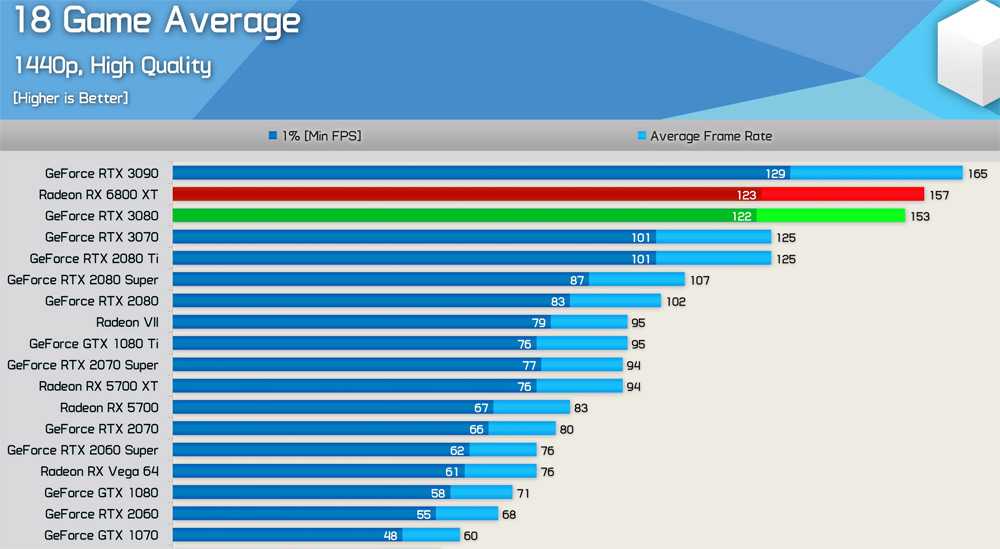
The RTX 3060 Ti provides much more value
GeForce RTX 3060 Ti
Paying $500-plus for a 60-class GeForce GPU is just madness. Go stream some games over GeForce Now instead, if you have a good Internet connection, and wait out this bloodbath. Nvidia’s cloud gaming service hooks into existing PC platforms so you don’t need to buy new games for it.
Ignoring the terrible modern GPU market, if we evaluate the RTX 3060 based on MSRP alone, it’s an uninspiring upgrade to the $350 RTX 2060. Its performance lands it in roughly the same territory as the $400 RTX 2060 Super or $500 RTX 2070. In many games, AMD’s older Radeon RX 5700 XT beats it, while the non-XT 5700 hangs tough in several titles (though it’s also smashed in others). Those launched at $400 and $350, respectively.
After seeing how far the pricier RTX 30-series pushed performance past their predecessors, the RTX 3060’s results are a bit deflating. We would’ve liked it much more at $300 or even less, but given today’s surging market, it makes sense for Nvidia to price the GPU higher to bolster its own bank account. At MSRP, the $400 GeForce RTX 3060 Ti is a much more powerful, much more compelling option.
At MSRP, the $400 GeForce RTX 3060 Ti is a much more powerful, much more compelling option.
Brad Chacos/IDG
The RTX 3060 is fine though, as we said at the beginning. It’s okay. But unlike the other RTX 30-series offerings, it’s nothing special. If you need a graphics card for 60-fps gaming at 1080p Ultra quality, this will scratch that itch, and the RTX 3060 can push even higher refresh rates in some games. You can also dabble in 1440p gaming if you don’t mind bumping the visual settings down a bit in modern titles. With an ample (read: overkill) 12GB of VRAM onboard, you’ll never have to worry about running out of memory. That’s great! And Nvidia’s DLSS and latency-reducing Reflex technologies remain a massive difference maker in games that support it.
Turning our attention to this specific graphics card, the EVGA XC Black Gaming lacks fancy extras like a backplate, RGB lighting, and a secondary BIOS, but it should fit into almost any system–and it runs cool and quiet. There’s no need to spend up for a more expensive model simply for better cooling performance. The price is certainly right for today’s insane GPU market—if you can find one.
There’s no need to spend up for a more expensive model simply for better cooling performance. The price is certainly right for today’s insane GPU market—if you can find one.
Don’t expect many of the baseline-cost RTX 3060 models to be made. Most vendors will focus their attentions on far pricier hot-rodded models for which they can charge significantly more, even before scalpers swoop in.
Don’t spend $500 or more on a graphics card like this. I wouldn’t personally spend $400 on an RTX 3060—even a luxurious high-end model with every bell and whistle you can think of. They’re already being sold for $600 or more on resale sites. The GeForce RTX 3060 is just a good-enough graphics card in a time where even okay, fine GPUs sell out instantly for staggering amounts.
Pay up if you must, but sit on the sidelines for now if you can.
GeForce RTX 3060 Max-Q Mobile Graphics Card Review and Test
The GeForce RTX 3060 mobile graphics card was introduced in early 2021 along with older models based on the Ampere architecture. It is based on the GA106 GPU with all the advantages of the then advanced architecture. GeForce RTX 3060 Mobile supports ray tracing hardware acceleration and tensor acceleration for NVIDIA DLSS technology. Resizable BAR technology is also supported. Particular emphasis is placed on energy efficiency. All graphics cards of this generation support the new version of Max-Q technology, which allows you to get the most out of the graphics card, balancing the performance of the laptop. Initially, the Max-Q designation was introduced for energy-efficient versions of video cards in 2017. Such models are characterized by reduced power and lower frequencies. Now NVIDIA is talking about Max-Q support for all Ampere models. This is a combination of different features and technologies (Dynamic Boost 2.0, Rapid Core Scaling and CPU Optimizer) for finer control over power, frequencies and cooling. At the same time, the division into different versions within the same series remains, so the mobile GeForce RTX 3060, GeForce RTX 3070 and even GeForce RTX 3080 are available in many configurations with different frequencies and power.
It is based on the GA106 GPU with all the advantages of the then advanced architecture. GeForce RTX 3060 Mobile supports ray tracing hardware acceleration and tensor acceleration for NVIDIA DLSS technology. Resizable BAR technology is also supported. Particular emphasis is placed on energy efficiency. All graphics cards of this generation support the new version of Max-Q technology, which allows you to get the most out of the graphics card, balancing the performance of the laptop. Initially, the Max-Q designation was introduced for energy-efficient versions of video cards in 2017. Such models are characterized by reduced power and lower frequencies. Now NVIDIA is talking about Max-Q support for all Ampere models. This is a combination of different features and technologies (Dynamic Boost 2.0, Rapid Core Scaling and CPU Optimizer) for finer control over power, frequencies and cooling. At the same time, the division into different versions within the same series remains, so the mobile GeForce RTX 3060, GeForce RTX 3070 and even GeForce RTX 3080 are available in many configurations with different frequencies and power. Websites still use the Max-Q prefix to designate ultra-economical versions, although it would be correct to indicate the power of a particular video card. Some responsible manufacturers do this, but not all.
Websites still use the Max-Q prefix to designate ultra-economical versions, although it would be correct to indicate the power of a particular video card. Some responsible manufacturers do this, but not all.
The GeForce RTX 3060 series for laptops comes in a dozen variants with different power and different frequencies. Obviously they differ in performance although they use the same GA106 GPU with 3840 CUDA cores, 120 tensor units and 30 RT cores. But if the top version of the GeForce RTX 306 for laptops is limited to TGP 115 W with Boost Clock up to 1702 MHz, then economical versions are cut to 60-80 W with Boost Clock at 1300 MHz. All these graphics cards are equipped with 6 gigabytes of GDDR6 memory for 192-bit bus, but the frequency can vary from 14 Gb / s to 12 Gb / s. It should be noted that the desktop GeForce RTX 3060 uses a stripped-down GA106 with 3584 CUDA cores, but runs on Boost Clock at 1777 MHz at 170 W, plus 12 GB of memory. For clarity, below are the full specifications of the desktop GeForce RTX 3060, the fastest GeForce RTX 3060 for laptops and the economical version of the GeForce RTX 3060 Max-Q.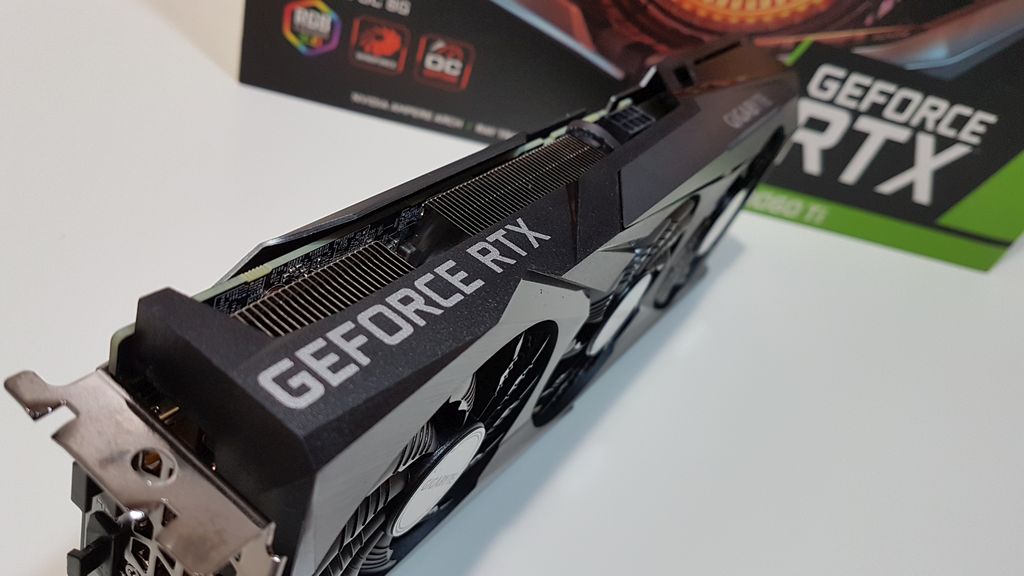
|
GeForce RTX 3060 Desktop |
GeForce RTX 3060 Mobile |
GeForce RTX 3060 Max-Q |
|
|
Architecture |
Ampere |
Ampere |
Ampere |
|
Core |
GA106 |
GA106 |
GA106 |
|
Number of transistors, million pieces |
12000 |
12000 |
12000 |
|
Technical process, nm |
8 |
8 |
8 |
|
Core area, sq. mm |
276 |
276 |
276 |
|
Number of CUDA stream processors |
3584 |
3840 |
3840 |
|
Number of tensor cores |
112 |
120 |
120 |
|
Number of RT cores |
28 |
30 |
30 |
|
Number of texture units |
112 |
120 |
120 |
|
Number of ROPs |
48 |
48 |
48 |
|
Core clock (Base Clock), MHz |
1320 |
1387 |
817 |
|
Core frequency (Boost Clock), MHz |
1777 |
1702 |
1282 |
|
Memory bus, bit |
192 |
192 |
192 |
|
Memory type |
GDDR5 |
GDDR5 |
GDDR5 |
|
Effective memory frequency, MHz |
15000 |
14000 |
11750 |
|
Memory capacity, GB |
12 |
6 |
6 |
|
Interface |
PCIe 4. |
PCIe 4.0 x16 |
PCIe 4.0 x16 |
|
Power TGP, W |
170 |
115 |
60 |
More powerful versions of the GeForce RTX 3060 are used in large gaming laptops, while the economical GeForce RTX 3060 Max-Q is focused on compact thin models. This review considers the second version with the minimum frequencies for this series.
Consider the video card in the Acer Predator Triton 300 SE PT314 laptop. This is a small productive laptop up to 2 cm thick. It is these models that receive economical versions of GeForce RTX.
Notebook specifications
|
Screen |
14″ 1920×1080 144Hz |
|
Processor |
Intel Core i7-11375H (3.3-5 GHz) |
|
RAM |
16 GB DDR4-3200 |
|
Video card |
GeForce RTX 3060 6GB GDDR6 |
|
Data storage |
Western Digital SN730 1TB |
|
Networking |
Wi-Fi 6 802. |
|
Ports |
2x USB 3.2 Gen 2 Type-A, 1x USB 3.2 Gen 2 Type-C (Thunderbolt 4), HDMI, audio jack |
|
Accumulator |
3792 mAh |
|
Power supply |
180 W |
|
Dimensions |
323 x 228 x 18 mm |
|
Weight |
1.7 kg |
According to the main characteristics of the GeForce RTX 3060, everything is standard. Full version of GA106 GPU with 3840 CUDA cores, 192 bit memory bus and 6 GB on board. The frequencies are quite low: the base value of the GPU is 817 MHz with an average Boost Clock of 1282 MHz, the effective memory frequency is 11740 MHz. The video card works on a PCI-E 4.0 interface cut down to 4 lines, but many laptops use a video card in 4 or 8 PCI-E lanes mode. Resizable BAR technology is active.
Resizable BAR technology is active.
According to GPU-Z, the BIOS has a Power Limit of 60 W for default mode with a maximum value of 90 W. For more modern versions of the Acer Predator Triton 300 SE, 80-90 W are sometimes indicated for such a video card, but this can also mean the maximum power limit, when the video card can only work in this mode under certain conditions and at some point in time.
Actual Boost frequencies are determined by application load, temperature, and power. Dynamic Boost 2.0 technology allows you to flexibly adjust the overall power of the laptop within the specified limits, balancing between the CPU and GPU. In games, the processor rarely reaches peak power, which allows the system to further increase the power limit on the GPU if cooling allows it.
For example, in the long 3DMark Time Spy test, the laptop kept the GPU operating frequencies at 1500 MHz at a power of 70-80 watts. At the same time, the CPU cores periodically gave out frequencies up to 4000-4300 MHz.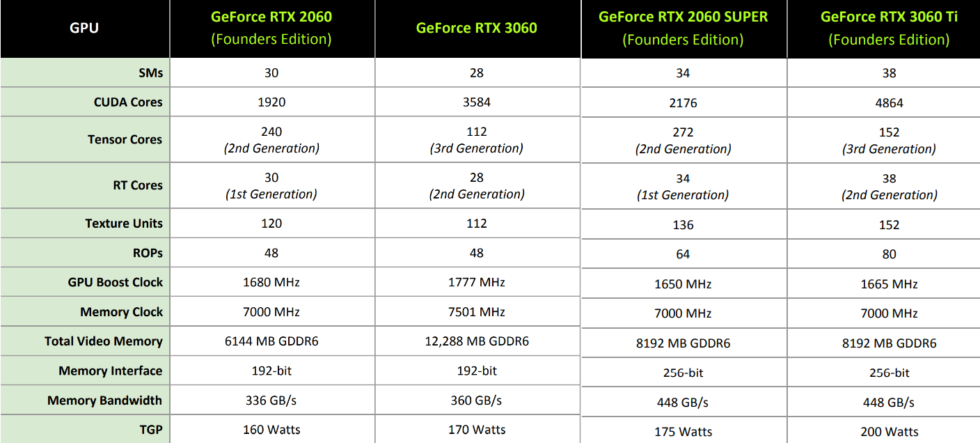
In games that do not use all threads, the processor power is lower, which allows the video card to show higher frequencies. In Far Cry 6, GPU acceleration up to 1700 MHz could be observed. But in most games, the frequencies were approaching 1500 MHz.
The heating factor also plays an important role. In our case, the laptop worked in a room with 20 ° C, which provided the temperature of the graphics chip within 75 ° C, after a long load, the heating approached 79°C. This mode was supported by fan speeds up to 4000 rpm. In a warm room, faster reaching of maximum temperatures and stronger throttling is possible. If you improve cooling and lower operating temperatures, you can achieve a slight increase in Boost. The Acer PredatorSense app allows you to adjust the speed of the fans, but speeding them up is not practical due to the high noise. For the same reason, we did not use overclocking of this video card — you can slightly increase the frequencies through MSI Afterburner, but this gives a minimal change in the results if you need to seriously accelerate the fans.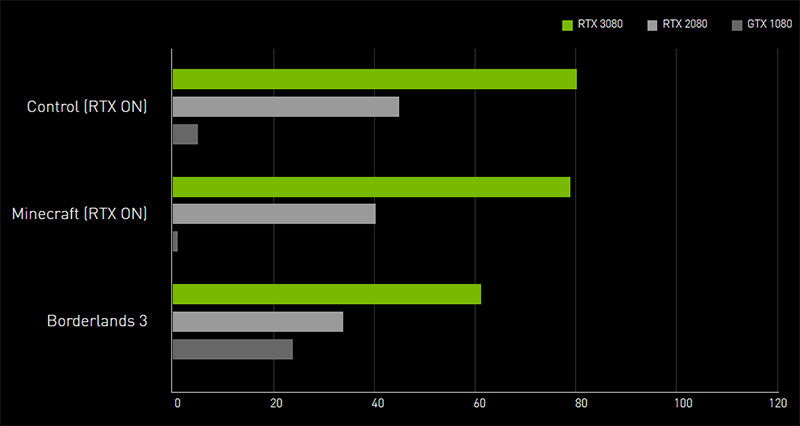
The overall result of this video card in 3DMark Time Spy is 6792 points with 7282 graphics points.
Full game test results are shown on the next page.
Test methodology
In games, tests were carried out at a resolution of 1920×1080. The graphs show the minimum and average frame rates.
3 DMark
The graph shows the Time Spy total score, graphical scores, and Port Royal tracing test score.
Assassin’ s Creed Odyssey
The built-in performance test was run several times. Additionally, the MSI Afterburner utility is used to control the minimum fps.
Multiple test runs at standard Ultra settings and a combination of Ultra quality and mid-level anti-aliasing.
Cyberpunk 2077
City street test walk, several repetitions.
Tested without ray tracing in three modes: Ultra graphics, High graphics and Ultra quality with active DLSS.
Days Gone
An identical game segment was repeated during the chase at the beginning of the game.
Maximum Ultra graphics quality.
Far Cry 6
Testing was carried out in the built-in gaming benchmark.
Ultra quality profile without tracing and maximum quality with tracing effects selected.
Final Fantasy XIV Endwalker
The special application Final Fantasy XIV: A Realm Reborn benchmark was running. The graph shows the average data for the first two tests.
Maximum Extreme quality and Ultra high quality selected.
God of War
A small test walk through the first location with staged scenes.
Two test modes — with Ultra and High graphics settings.
GhostWire: Tokyo
A small test walk through the first location.
Tested with regular Ultra graphics in DirectX 11 and low quality tracing in DirectX 12.
Horizon Zero Dawn
Several runs of the built-in benchmark.
The graphics quality is set to maximum.
Mafia: Definitive Edition
For testing, the chase from the first chapter was repeated. Several repetitions on each video card.
The graphics quality is set to High.
Red Dead Redemption 2
Several repetitions of the built-in game test.
The default Ultra graphics quality profile is selected. The second test mode is Ultra graphics with the DLSS quality mode turned on.
Resident Evil Village
Run through the detailed village street in the first chapter.
Two test modes — maximum graphics quality without tracing and maximum quality with low quality tracing.
Subnautica: Below Zero
First biome test run. Several repetitions to reduce the error.
Maximum graphics settings.
The Witcher 3: Wild Hunt
Story prologue. The hero and his partner are galloping along the road to the village. Several repetitions of the test sequence.
Ultimate quality selected, all additional effects and HairWorks active.
Weird West
Test run around the town of Birdhouse. Maximum settings, all effects are active.
Wasteland 3
A fixed sequence was performed at one of the detailed locations in the Colorado Springs area.
Maximum graphics settings.
More in this category:
« ASUS TUF Gaming GeForce RTX 3080 review and test. Comparison with Radeon RX 6800 XT
Comparison with Radeon RX 6800 XT
is now even faster than GECID.com. Page 1
::>Video cards
>2022
> ASUS TUF-RTX3060TI-O8GD6X-GAMING
15-12-2022
Page 1
Page 2
One page
The TUF Gaming line, which represents the mid-budget segment with the main focus on increased reliability of the element base, has received many interesting innovations over the past time, starting with an updated cooling system and ending with a metal casing and base plate, which not every flagship could boast of before. Somewhere at this point, you as a reader should have a feeling of deja vu and you will say that you have already seen the review of this video card. Yes, it’s true, but the devil is in the details. We previously tested the ASUS TUF Gaming GeForce RTX 3060 Ti OC Edition and found it to be a very exciting option for running games in Full HD.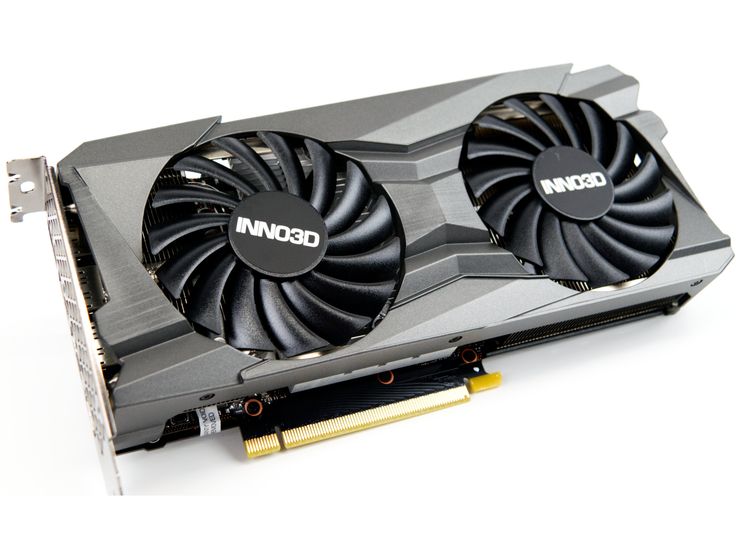
Today we are reviewing the video card ASUS TUF Gaming RTX 3060 Ti 8G GDDR6X (TUF-RTX3060Ti-O8G-GAMING-DDR6X) . Nominally, these are the same models, but today’s guest has GDDR6X video memory. What makes this review especially useful now is that it has no internal competitors in the face of the 40th series, at least until next summer, mining is no longer a problem, and the manufacturer has upgraded the video memory to GDDR6X. Therefore, anyone who was previously afraid to take the RTX 3060 Ti due to problems with GDDR6 memory can now purchase an updated version.
Specification
|
Model |
ASUS TUF Gaming RTX 3060 Ti 8G GDDR6X (TUF-RTX3060TI-O8GD6X-GAMING) |
|
GPU |
NVIDIA GA104-200 |
|
Microarchitecture |
NVIDIA Ampere |
|
Technical process, nm |
8 |
|
Number of CUDA cores |
4864 |
|
Number of texture units |
152 |
|
Number of raster blocks |
80 |
|
Number of tensor cores |
152 |
|
Number of cores RT |
38 |
|
Rated/dynamic frequency of the graphics core, MHz |
1380/1725 («Silent») 1410/1755 («Gaming») 1440/1785 («OC») |
|
Memory size, GB |
8 |
|
Video memory type |
GDDR6X |
|
Effective memory frequency, MHz |
19000 |
|
Memory bus width, bit |
256 |
|
Memory bandwidth, GB/s |
665. |
|
Internal interface |
PCI Express 4.0 x16 |
|
External interfaces |
2 x HDMI 2.1 3 x DisplayPort 1.4a |
|
Maximum resolution, pixels |
7680 x 4320 |
|
Minimum recommended power supply power, W |
750 |
|
Additional PCIe power connectors |
2 x 8-pin |
|
Dimensions, mm |
301 x 143 x 54 |
|
Illumination |
ASUS AURA SYNC |
|
Drivers |
Latest drivers can be downloaded from the ASUS website or the GPU manufacturer’s website |
|
Manufacturer website |
ASUS |
|
Product page |
ASUS TUF Gaming RTX 3060 Ti 8G GDDR6X |
Packaging and delivery
ASUS TUF-RTX3060TI-O8GD6X-GAMING comes in a beautifully designed cardboard box.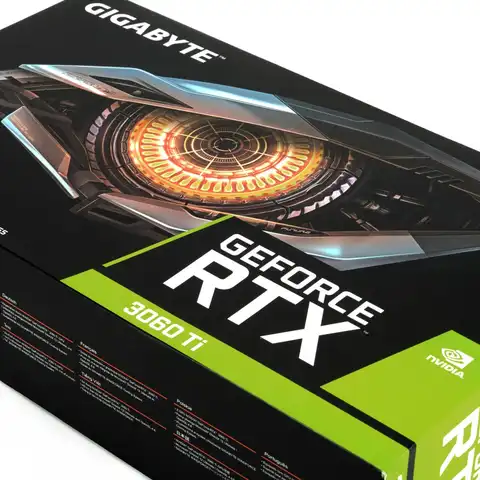 It has not undergone visual changes compared to the previous revision. On the top side there is an image of a graphics accelerator and its name. The back contains key benefits and useful information about the operating conditions of the product.
It has not undergone visual changes compared to the previous revision. On the top side there is an image of a graphics accelerator and its name. The back contains key benefits and useful information about the operating conditions of the product.
One of the sides contains information about the recommended power supply that is needed for this video card model. Based on the recommendations, the power supply should support two 8-pin PCIe cables. The official website still suggests using 750W models, because despite the addition of an additional 8-pin PCIe connector, power consumption has not increased much.
Appearance
The video card has inherited the stylish and discreet design of the entire ASUS TUF Gaming series. The cooling system is covered in a dark gray metal casing with a small pattern and industrial style cutouts. We can say that the ASUS TUF Gaming RTX 3060 Ti 8G GDDR6X will have no problem matching the style with most systems.
For fans of LED-backlighting, they left branded illumination ASUS Aura Sync. You can synchronize its operation with the illumination of other compatible components of your PC.
Note the reliable element base of ASUS TUF Gaming RTX 3060 Ti 8G GDDR6X. It includes solid-state and tantalum-polymer capacitors, as well as chokes with a ferrite core.
There is a metal support plate on the reverse side. Its function is to protect the printed circuit board from bending and prevent possible damage to components during careless installation and operation.
The video card is powered by a PCI Express 4.0 x16 slot and two 8-pin PCIe connectors. This modification has retained the good location of these connectors, so that the cooler does not make it difficult to disconnect the PCIe cable.
The Dual BIOS switch for activating Performance or Quiet modes also remained in its place.
The following set of interfaces is used for image output:
- 2x HDMI 2.
 1;
1; - 3x DisplayPort 1.4a.
The maximum resolution is 7680 x 4320.
The video accelerator is based on the 8nm GPU GA104-200. Its base frequency is 1410 MHz, and the dynamic one reaches 1755 MHz in the “Gaming” mode, which is 5.4% higher than the reference 1665 MHz and is similar to the frequency of the ASUS TUF-RTX3060TI-O8G-GAMING version with GDDR6.
The proprietary GPU Tweak III utility also includes OC and Silent profiles. After activating the first one, the GPU frequency formula rises to 1440/1785 MHz. And when you add a second, it drops to 1380/1725 MHz.
The video memory is made up of Micron GDDR6X chips with a total capacity of 8 GB. They operate at a reference effective frequency of 19000 MHz. Data exchange between the graphics core and memory is carried out through a 256-bit bus capable of passing 608 GB of information per second.
It should be noted that the use of a newer memory standard with a more efficient frequency has significantly increased the bandwidth of the video adapter bus.
Cooling system
ASUS TUF Gaming RTX 3060 Ti 8G GDDR6X with installed cooling system occupies almost three expansion slots (2.7) and has a total length of 301 mm.
The cooler consists of a three-section aluminum radiator and six nickel-plated copper heat pipes with a diameter of 6 mm.
A nice bonus is the cooling of the elements of the power subsystem and video memory chips using the main radiator.
ASUS TUF Gaming RTX 3060 Ti 8G GDDR6X received three fans with an Axial-tech design and a blade diameter of 90 mm. Their impeller is looped along the outer radius. Together with the redesigned blade shape, this increases the downward airflow pressure and improves cooling efficiency.
The fans are based on double ball bearings and counter-rotate to reduce turbulence. There is also a passive mode of operation up to a GPU temperature of 50°C.
When automatically adjusting the speed of rotation of the fan blades in the maximum load mode, the graphics core heated up to 58°C with a critical value of 93°C.

 0 x16
0 x16  11ax, Bluetooth 5.2
11ax, Bluetooth 5.2 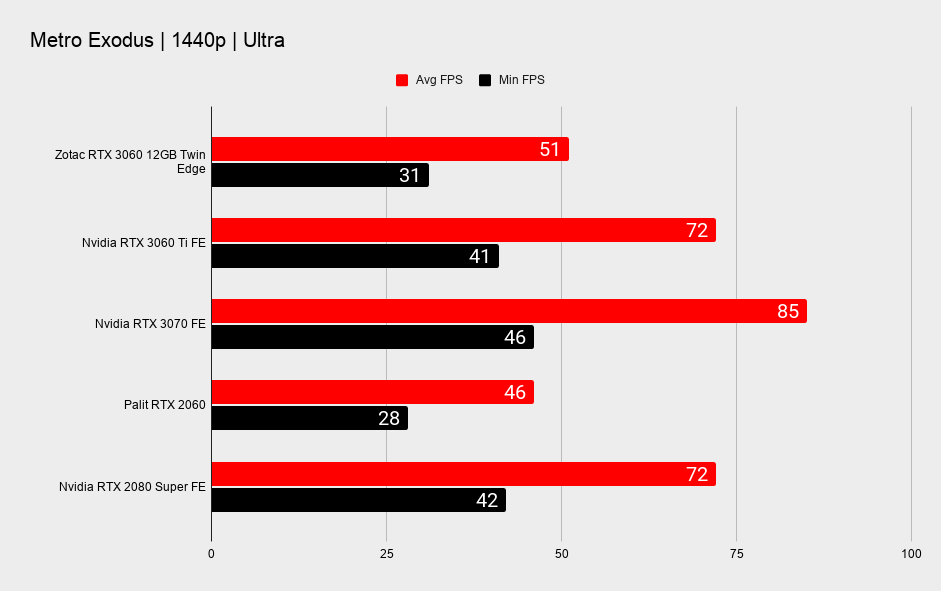 6
6